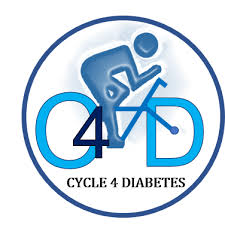How Cycling Helped Me Manage My Diabetes—Is It Really the Cure Everyone Claims?
- admin
- September 29, 2024
- 6:25 pm
- No Comments

When I was first diagnosed with type 2 diabetes, it was hard to digest.
My blood sugar was all over the place, I was exhausted, and nothing seemed to be working despite the medications.
My doctor prescribed me extended-release metformin (1000 mg metformin ER), and while it helped, I still was not feeling like myself.
That is when I turned to cycling—a choice that ended up changing how I manage my condition.
t was not a cure, but it became a vital part of my journey in keeping my diabetes in check.
Here is a deep dive into my personal experience.
“How Cycling Helped Me Manage My Diabetes” Article Index:
- The Struggle Before I Started Cycling
- Introducing Cycling to My Routine: An Experiment
- How Cycling Improved My Blood Sugar Levels
- Long Distance Cycling with Type 2 Diabetes
- Why Cycling is Good for Diabetes Management
- Conclusion: Is Cycling Really the Miracle Everyone Claims?
The Struggle Before I Started Cycling
Like many people freshly diagnosed with diabetes, I found myself caught in a frustrating cycle—no pun intended—of numbers, prescriptions, and lifestyle confusion. Every day felt like a game of nutritional roulette. One wrong bite or skipped walk, and my glucose would spike like a rollercoaster on caffeine.
At the beginning of my journey, my blood glucose monitor and I had an emotionally complicated relationship. The numbers often looked like this:
Morning fasting blood sugar: 170 mg/dL
Post-meal blood sugar: 220 mg/dL
A1C level: 8.3%
Even after I started taking extended-release metformin (1000 mg ER), the improvements were modest. The medication acted more like a seatbelt than a steering wheel—it kept things from flying off the rails but didn’t exactly guide me toward better health. I was treading water in a diabetic tide pool.
My diet was “okay,” my activity levels were hit-or-miss, and I wasn’t seeing the progress I craved. That’s when something clicked—while digging through the garage one weekend, I spotted my dusty old bike, sitting like a forgotten relic of better days. That simple moment sparked a radical idea: What if I didn’t need a new prescription, but a new habit?
It wasn’t about losing weight or training for a race. I considered jogging to beat diabetes but gave the idea even before I managed tied my shoe lace. It was about reclaiming control, one pedal stroke at a time. That bike—and the decision to ride it—marked the beginning of a transformation far greater than I expected.
Introducing Cycling to My Routine: An Experiment
I started small—just a couple of 20-minute rides around my neighborhood.
At first, I was cautious because I had heard about the risks of hypoglycemia cycling.
After all, sudden dips in blood sugar can be dangerous during physical activity, so I made sure to monitor my levels before and after every ride.
I noticed something interesting after my first week of cycling. My post-exercise blood sugar levels were noticeably lower than usual:
- Post-ride blood sugar: 140 mg/dL (previously around 170 mg/dL after a similar meal)
Encouraged by the results, I increased my ride duration to 30 minutes, then eventually to an hour.
Before long, I was doing longer rides of 10 miles or more and began experimenting with long distance cycling with type 2 diabetes.
How Cycling Improved My Blood Sugar Levels?
Cycling was more than just a workout—it became a turning point in my metabolic health. After three months of consistent riding, the changes in my blood sugar were not subtle—they were striking:
Morning fasting blood sugar: Dropped from 170 mg/dL to 110 mg/dL
Post-meal blood sugar: Fell from 220 mg/dL to 160 mg/dL
A1C level: Improved from 8.3% to 6.8%
These improvements didn’t just look good on paper—they felt even better in real life. I had more energy, fewer crashes, and even my sleep improved.
Here is how it works, point by point:
Improved Insulin Sensitivity
Research in the Journal of Diabetes Research shows that aerobic activities like cycling make your cells more receptive to insulin, reducing blood sugar levels without extra medication.Muscle as a Glucose Sponge
During cycling, muscles become active glucose absorbers. This means more sugar is taken up from the bloodstream and used for energy, preventing post-meal spikes.Reduced Visceral Fat
Regular cycling helps burn deep belly fat, which is strongly associated with insulin resistance. Less fat = better blood sugar control.Lower Stress Hormones
Exercise decreases cortisol, a hormone that can elevate blood glucose levels. Stress causes type 2 diabetes and hence, it needs to be managed. Cycling helped calm both my mind and my numbers.Consistency Counts
Cycling 30–45 minutes a day, five times a week, gave me a rhythm—and my pancreas seemed to appreciate it.
In short, my bike became my blood sugar management tool. And it turns out, it’s backed by science.

Long Distance Cycling with Type 2 Diabetes: Balancing Risks and Rewards
Of course, cycling isn’t all smooth sailing. One of the biggest challenges I faced was preventing low blood sugar during long rides.
Hypoglycemia cycling is a real risk, especially during prolonged or intense exercise.
Before each ride, I had to carefully monitor my glucose levels using my blood glucose monitor cycling, making sure I started in a safe range.
For longer rides (over 60 minutes), I made sure to carry snacks with me—usually a banana or a handful of nuts—just in case my blood sugar dipped too low.
After a few close calls, I learned to take frequent glucose checks and keep an eye on how my body felt during the ride.
Why Cycling is Good for Diabetes Management?
There is plenty of scientific evidence supporting the benefits of cycling and diabetes type 2 management.
Studies suggest that regular physical activity can lower blood sugar levels and reduce insulin resistance.
Cycling, in particular, has a few specific advantages:
- Low Impact on Joints: Unlike running or high-impact exercises, cycling is gentle on the knees and joints, making it an excellent choice for people with diabetes who may also have joint issues.
- Improves Cardiovascular Health: Cardiovascular disease is a leading complication of diabetes, and cycling strengthens the heart and improves circulation.
- Mental Health Benefits: Managing diabetes can be stressful. Cycling gave me an outlet to de-stress, which also helped stabilize my blood sugar levels.
After six months of regular cycling, I noticed additional improvements in my physical and mental well-being, including lower cholesterol and more energy throughout the day.
These improvements were confirmed by my doctor, who noted that my numbers were better than ever.
Conclusive Analysis: Is Cycling Really the Miracle Cure Everyone Claims???
So, is cycling the magic cure for diabetes?
The truth is, no single activity or treatment can “cure” diabetes, but cycling has made managing my type 2 diabetes clubbed with supplements to lower blood sugar significantly easier. The improvements I saw in my blood sugar levels, physical health, and mental well-being were undeniable.
Combining regular cycling with metformin controlled release and healthy eating turned out to be the right formula for me.
Is cycling the cure everyone claims?
No!
But is it a fantastic way to help control blood sugar and live a healthier life with diabetes?
Absolutely!
For anyone considering adding cycling to beat diabetes into their routine, I would wholeheartedly recommend it.
Just make sure to monitor your blood sugar carefully, especially during longer rides, and always consult your healthcare provider before making any big changes to your exercise routine.
Here is My Advise: With cycling as a consistent part of my life, managing diabetes has become much less of a daily struggle and more of a balanced lifestyle.
References: